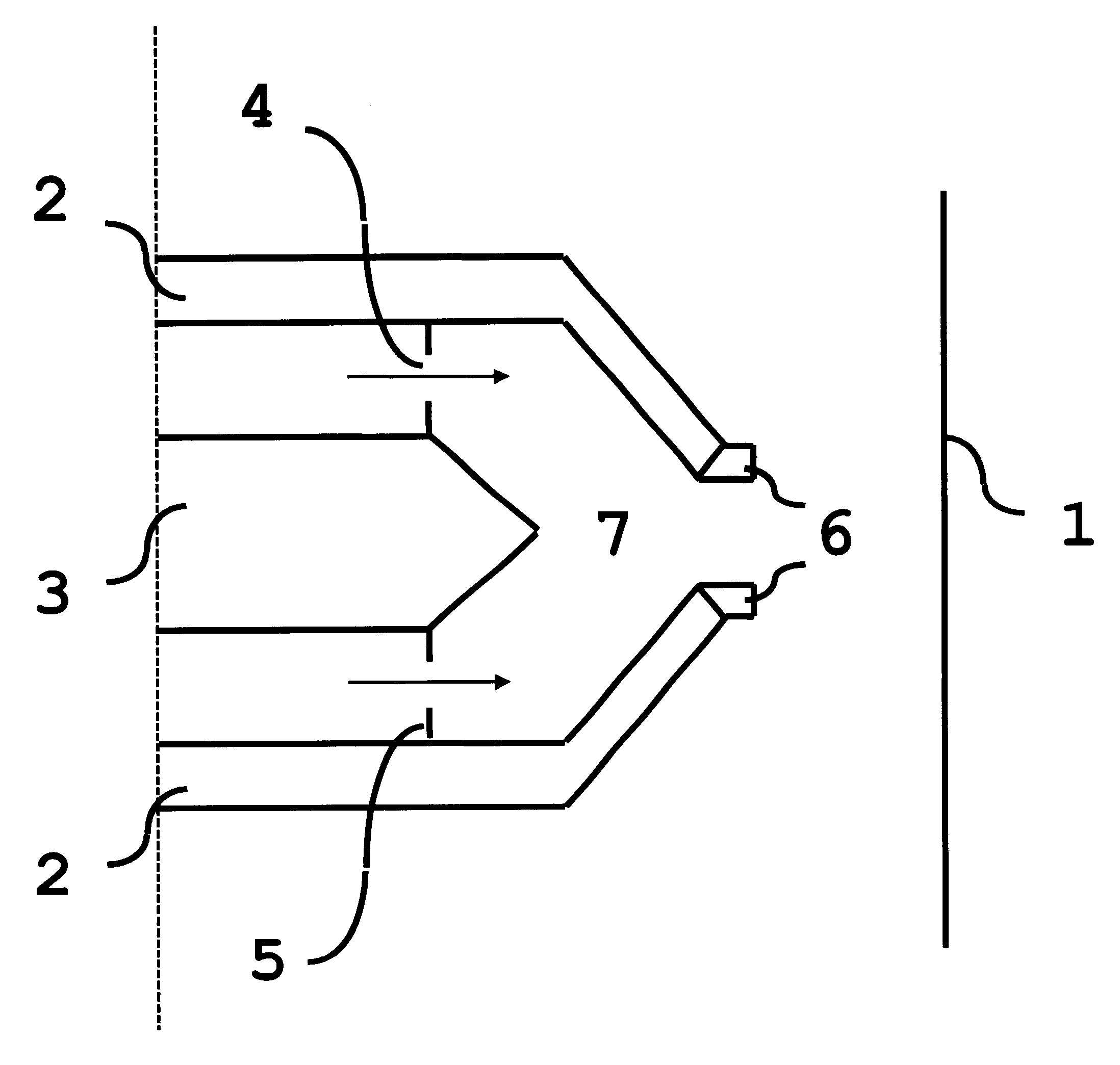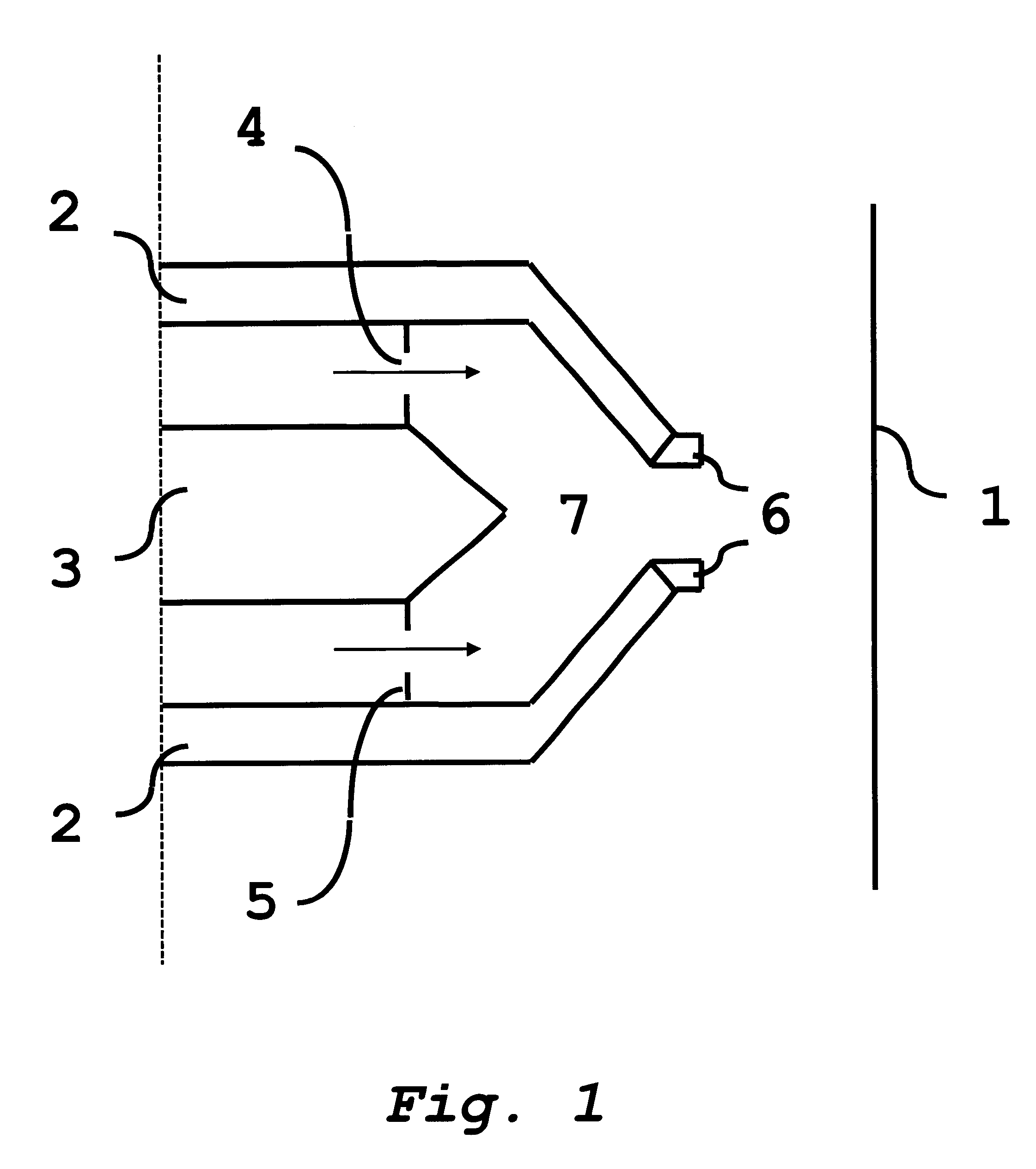Method for erasing a lithographic printing master
a lithographic printing master and lithographic printing technology, applied in the field of lithographic printing master erasing, can solve the problems of difficult to remove debris, damage to the electronics and other devices of the press, less suitable for on-press coating, etc., and achieves convenient and simple cleaning steps, fast and easy to automate
- Summary
- Abstract
- Description
- Claims
- Application Information
AI Technical Summary
Benefits of technology
Problems solved by technology
Method used
Image
Examples
example 1
The surface of an anodized aluminum support was covered with a soot layer by contacting said surface with the flame of a Bunsen burner fed with natural gas. After coating the whole support, the layer was rubbed off with a dry cloth so as to obtain a thin layer of soot. The plate precursor thus obtained was image-wise exposed in heat-mode with a Nd:YLF (1060 nm) external drum (XTD) laser having a power of 738 mW and a scan speed of 8.0 m / sec. The plate was mounted on the cylinder of an AB DICK 360 (trade name) printing press and cleaned with a sponge moistened with plain water. A pressrun of 25000 copies was started using RUBBER BASE PLUS VS2329 Universal Black ink, trade name of Van Son, and TAME EC 7035 fountain, trade name of Anchor, the latter diluted with water 50-fold. The print quality was very good, throughout the pressrun.
After the pressrun, the soot layer was removed by a treatment with an atmospheric plasma jet using a PLASMATREAT.RTM. nozzle (trademark of Agrodyn Hochspan...
example 2
An aluminum support was coated with a mixture of 12.5 g of silicone DEHESIVE 520, 1 g of VERNETZER V03 and 0.5 g of KATALYSATOR C09, all trade names of Wacker-Chemie GmbH (Munich, Germany), to obtain an ink-abhesive layer having a dry thickness of 10 .mu.m. Silicone DEHESIVE 520 has an average molecular weight of about 5000. The sample was cured at 90.degree. C. during 40 seconds and then rubbed in with a semi-burned cork. The recording layer thus obtained was tamped with a cotton pad so as to obtain a relatively homogenous top layer of soot.
A test pattern was exposed in heat-mode using an XTD Nd:YAG image-setter (spot-size at 1 / e2: 23 .mu.m) at a scan speed of 1 and 2 m / sec and a power of 350, 400 and 450 mW (six different exposures at distinct areas of each sample). The image pattern was visible immediately after exposure. The plate was then processed by rubbing with a cotton pad that was moistened with water while being mounted on the plate cylinder of an AB DICK 9860 printing pr...
PUM
| Property | Measurement | Unit |
|---|---|---|
| Percent by mass | aaaaa | aaaaa |
| Percent by mass | aaaaa | aaaaa |
| Pressure | aaaaa | aaaaa |
Abstract
Description
Claims
Application Information
 Login to View More
Login to View More - R&D
- Intellectual Property
- Life Sciences
- Materials
- Tech Scout
- Unparalleled Data Quality
- Higher Quality Content
- 60% Fewer Hallucinations
Browse by: Latest US Patents, China's latest patents, Technical Efficacy Thesaurus, Application Domain, Technology Topic, Popular Technical Reports.
© 2025 PatSnap. All rights reserved.Legal|Privacy policy|Modern Slavery Act Transparency Statement|Sitemap|About US| Contact US: help@patsnap.com


